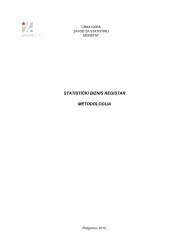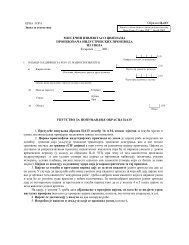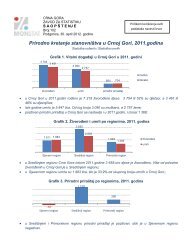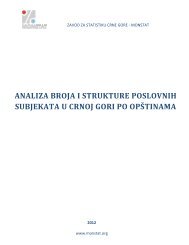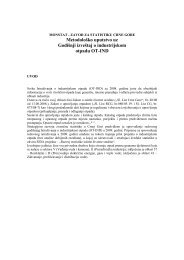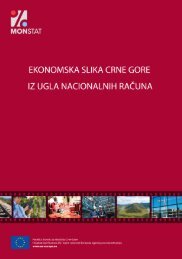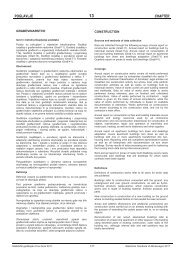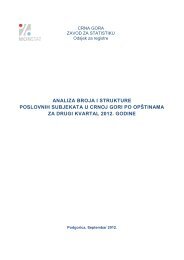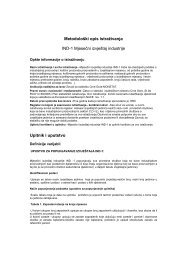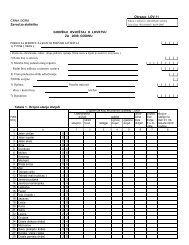Struktura poljoprivrednih gazdinstava - midas
Struktura poljoprivrednih gazdinstava - midas
Struktura poljoprivrednih gazdinstava - midas
- No tags were found...
Create successful ePaper yourself
Turn your PDF publications into a flip-book with our unique Google optimized e-Paper software.
Popis poljoprivrede 2010 Agricultural Census 20102. DETERMINING REGIONAL COEFFICIENTS OF STANDARD OUTPUTThe standardised classification of agricultural holdings in a regulated Community typologyconcentrates on the type of farming and economic size, and is based on an economiccriterion, the SO.Definitions and principles for calculating SO coefficientsThe SO of an agricultural product (crop or livestock) is the monetary value of the agriculturalgross production at the farm-gate price (The farm-gate price is the price mostly used forstatistics (Economic Accounts for Agriculture, FADN, price statistics in Eurostat and in DGAGRI). The marketing (and transporting) expenditures are to be considered as costs and theyare not deducted from the price to be used in the standard output calculation.):• Including sales, farm use, farm consumption and changes in stocks,• Including both the value of the principal and any secondary products. The principal productis usually the one with the highest value; the other products are taken as secondary ones,Excluding direct payments, value added tax and taxes on products: no direct payments(coupled, decoupled)Secondary products are to be valued if they are sold or used on the farm. The farm-gate pricemeans the price of a product before any deduction for transportation or marketing costs. If ina region a product cannot be sold without being packed, the farm-gate price used shouldreflect the price of the packed product.The SO is a unit value: for each type of crop production it corresponds to one hectare (or oneare = 100 m2 for mushrooms), and for livestock production it corresponds to one head oflivestock (or 100 heads in the case of poultry) or one hive for bees. In the FSS it correspondsto the area and livestock as recorded at a given time, whereas in FADN it corresponds to theyearly average.The data used to calculate a SO cover a twelve-month production period (either a calendaryear or an agricultural year). If the period of production for crops and livestock is other thantwelve months, the figure should be converted into values relating to a period of twelveconsecutive months.These SOs per region and characteristics are named the regional SO coefficients.At least once every 10 years, when the FSS is carried out in the form of a census, the basicdata for determining SO are renewed. Within the 10-year period the SO coefficients areupdated each time there is a new FSS.In order to smooth the effects of short-term fluctuations, which may be considerable in cyclicalanimal production or in horticulture, the SO coefficients are calculated as an average over areference period covering five successive calendar or agricultural years. For a FSS year N,the SO coefficients are the average of year N-5 to year N-1. Therefore for FSS 2010, MemberStates will calculate SO coefficients as an average of 2005-2009.Zavod za statistiku Crne Gore 22 Statistical Office of Montenegro



